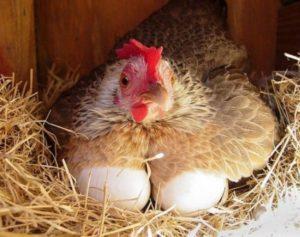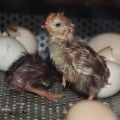Is it possible to wash eggs before laying them in an incubator than to process them at home
The first time when breeding chickens or ducklings, many questions arise, because the process, although interesting, is quite complicated. One of these questions - is it possible to wash the eggs just before setting them in the incubator? Of course, this is not the most important question. But, nevertheless, such subtleties need to be known in order for poultry breeding to be successful.
How do I select suitable eggs?
Before laying eggs in the incubator, you need to select in advance those from which the chicks will hatch. The most important sign is freshness. The fresher they are, the more likely they are all to hatch healthy and strong chicks.
The second sign is size. This trait is hereditary, therefore, chickens bred from large eggs will lay well.
Signs of suitable incubator eggs:
- The shell should be smooth without cracks and various build-ups. Fresh are usually dull, while old ones are smooth to the touch.
- The shape should be oval. Weak chicks hatch from round or strongly elongated ones.
You can determine freshness by throwing an egg into a glass of water. If it fell sideways to the bottom, then it is fresh. And floats closer to the surface, then the old.
Do eggs need to be washed before placing them in the incubator?
Although the question of whether it is necessary to wash the shells before laying in the incubator is not the most important one, it is still recommended to study it. Here the opinions of poultry farmers were divided. Some argue that it is imperative to wash the shell before laying, because various pathogenic microorganisms remain on it that cause illness in chicks. Even if a bird is healthy at first glance, it can be a carrier of disease. This is especially true for ducks and geese.

Others, on the contrary, argue that in natural conditions, the shell is not processed, and the chicks hatch healthy. The weak die in any case.
Scientific research suggests that shelling before setting improves hatchability and chicks hatch healthier. Farmers, in turn, argue that there is not much difference.
Cleaning methods
Egg preparation begins with careful processing of the shell. This can be done in several ways.
Egg washing
The easiest way is to wash the shell with water and a small amount of laundry soap. The eggs are transferred to a large container, filled with warm water and a little soap is added, then the surface is wiped with a sponge.After washing, they are dried and only after that they are placed in an incubator.

Formaldehyde vapor treatment
The shell can be treated with formaldehyde vapors. This method requires an airtight container. For the procedure you will need:
- 25 ml of formaldehyde;
- 15 ml of filtered water;
- 15 g of potassium permanganate.
Formaldehyde is mixed with water. Potassium is added when the container is already installed in the chamber. The temperature in the chamber should be approximately + 30-36 degrees.
The humidity level is maintained at 75%. Leave them in the chamber for 40 minutes. At the end of the procedure, the chamber is thoroughly ventilated.
As a result of the reaction, vapors are released, which have a disinfecting effect. After that, the chamber is immediately closed. It is dangerous for a person to breathe these vapors, they can cause serious poisoning.

Formalin solution
Formalin is used to process hatching eggs. For the procedure, use a 0.5% formalin solution. The substance is diluted in equal proportions with water. Then the liquid is heated to 31 degrees. The eggs are laid out in a net. Keep there until the dirt is completely washed off.
By quartzing
The simplest and safest method of cleansing is quartzing. This method allows you to clean the shell well from dirt.
Quartzing procedure:
- Place prepared eggs for setting in the incubator in the tray.
- Place quartz radiation at a distance of 80 cm.
- Turn on the quartz source and leave it next to the tray for 10 minutes.

This time will be quite enough to clean the shell of contamination.
Hydrogen peroxide
Another way to cleanse eggs from contamination is to rinse them in hydrogen peroxide. To do this, a small amount of hydrogen is poured onto a cotton pad and the surface is wiped with it. It is best to take a new disc as often as possible to thoroughly clean the eggs. After the procedure, dry them and then you can send them to the incubator.
How does pollution affect eggs?
Eggs, especially not purchased ones, often have various contaminants. Although they do not bring significant harm, because under natural conditions no one cleans them, and the chickens still hatch without problems. But some poultry farmers believe that pollution contributes to the appearance of diseases in chicks, due to which they die after a few weeks after hatching.
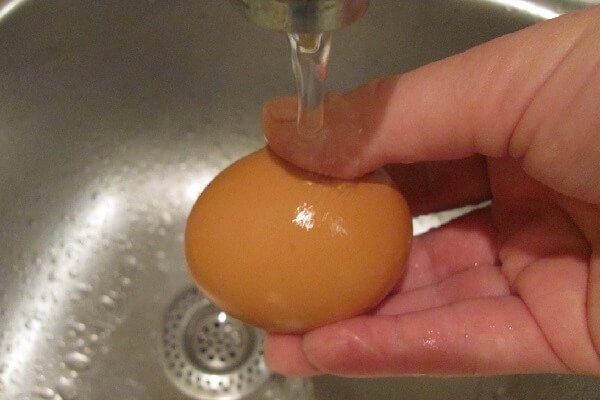
How to disinfect an incubator before laying eggs
But not only eggs need to be prepared before laying. The incubator itself at home must also be cleaned so that it is sterile. This will help prevent disease in newly hatched chicks.
Chloramine solution
Chloramine solution is used for disinfection. This method of all methods of processing an incubator is considered the most common. It is used both industrially and in the household. The substance is sold in regular pharmacies. The price for it is quite reasonable.
For shell processing, 10 tablets are dissolved in 1 liter of filtered water. Then the resulting solution is poured into a spray bottle and the incubator is sprayed from it. It is especially important to spray in hard-to-reach places.
The solution is left for 3-4 hours. Then they are rinsed with running water. Again, the solution must be washed out thoroughly from hard-to-reach places.
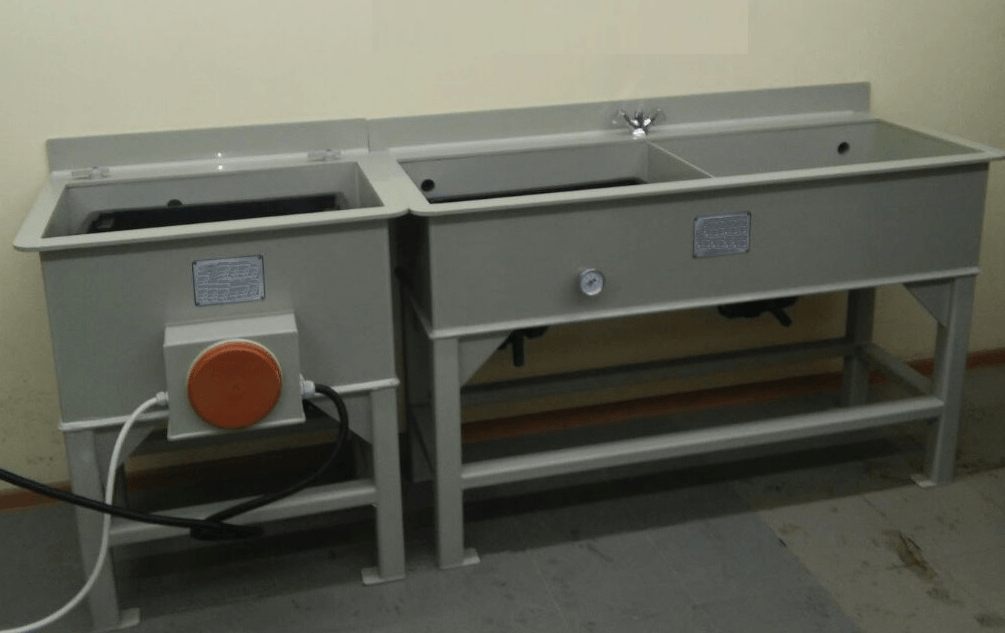
Formaldehyde vapor
Just like the shells, the incubator can be treated with formaldehyde vapor. The cooking principle is the same as for egg disinfection. In 40 ml of 40% formaldehyde add 35 g of potassium permanganate. The resulting solution is poured into a high-necked container and placed in an incubator.
For successful disinfection, you need to set the temperature to +39 degrees. Close all ventilation openings so that they do not let in steam.
Leave the container for 45 minutes.After the time has elapsed, the container is taken out, and the incubator itself is ventilated for 24 hours. To make the smell of formaldehyde disappear faster, surfaces can be wiped with ammonia.
Formalin vapor
35 ml of a 40% formalin solution is diluted with 35 g of potassium permanganate and 40 ml of water. An earthenware or enamel plate is placed in the incubator. Pour the resulting solution into a container at the bottom. Just like with formaldehyde, all vents are plugged. The fan can be turned on to distribute the vapors evenly. In this case, the temperature is raised to +38 degrees. Leave the solution for about 45 minutes.

Ozonation method
Another way to prepare eggs for the incubator is through the ozonation method. Ozone is added to the chamber in the amount of 350-450 mg per 1 cubic meter. The temperature is set within +26 degrees. Humidity for successful ozonation of the incubator must be at 80%. The whole process takes about one hour.
UV treatment
One of the easiest ways to clean the incubator before laying eggs. To do this, place an ultraviolet lamp in the incubator and turn it on for 40 minutes. After that, you can start laying eggs in it.
Ready-made commercial drugs
For processing the shell, you can use ready-made preparations. For example, Javel Solid is effective. This preparation cleans eggs well from dirt. Ordinary iodine is also suitable for this purpose. A few drops of iodine are diluted in water and mixed thoroughly. Then the eggs are placed in water for 1 hour. Then they are dried and placed in an incubator.
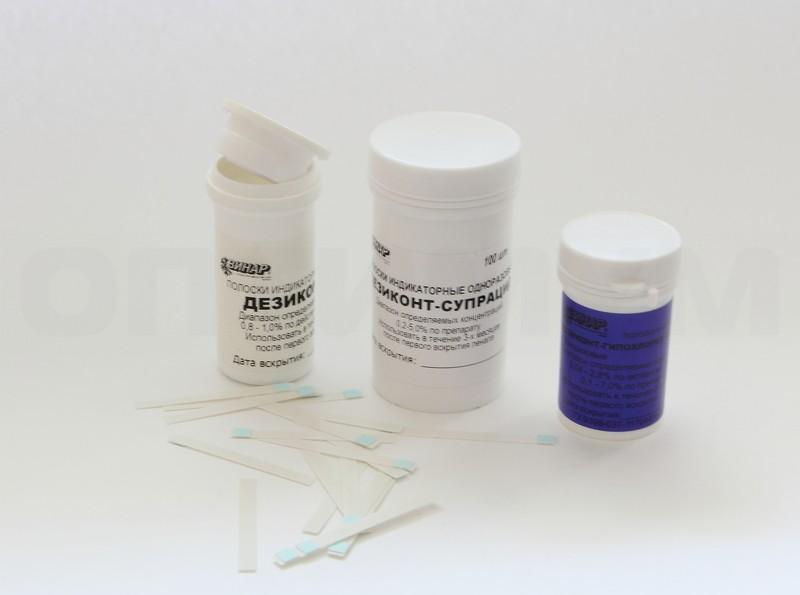
Effective products for incubator disinfection:
- Bromosept;
- "Virocid";
- "Glutex";
- Delegol;
- Fiam-Super;
- Ecoweed.
Purchased disinfectants are used in accordance with the instructions. During use it is not recommended to let the substance come into contact with the sensor, heating element or motor. Because of this, the incubator breaks down.
Another effective drug for disinfection is Chloramine B. Chloramine B is heated to 30 degrees. Then the eggs are lowered in turn for a few minutes. After the procedure, each egg is thoroughly washed under running water to wash off the remaining substance.

